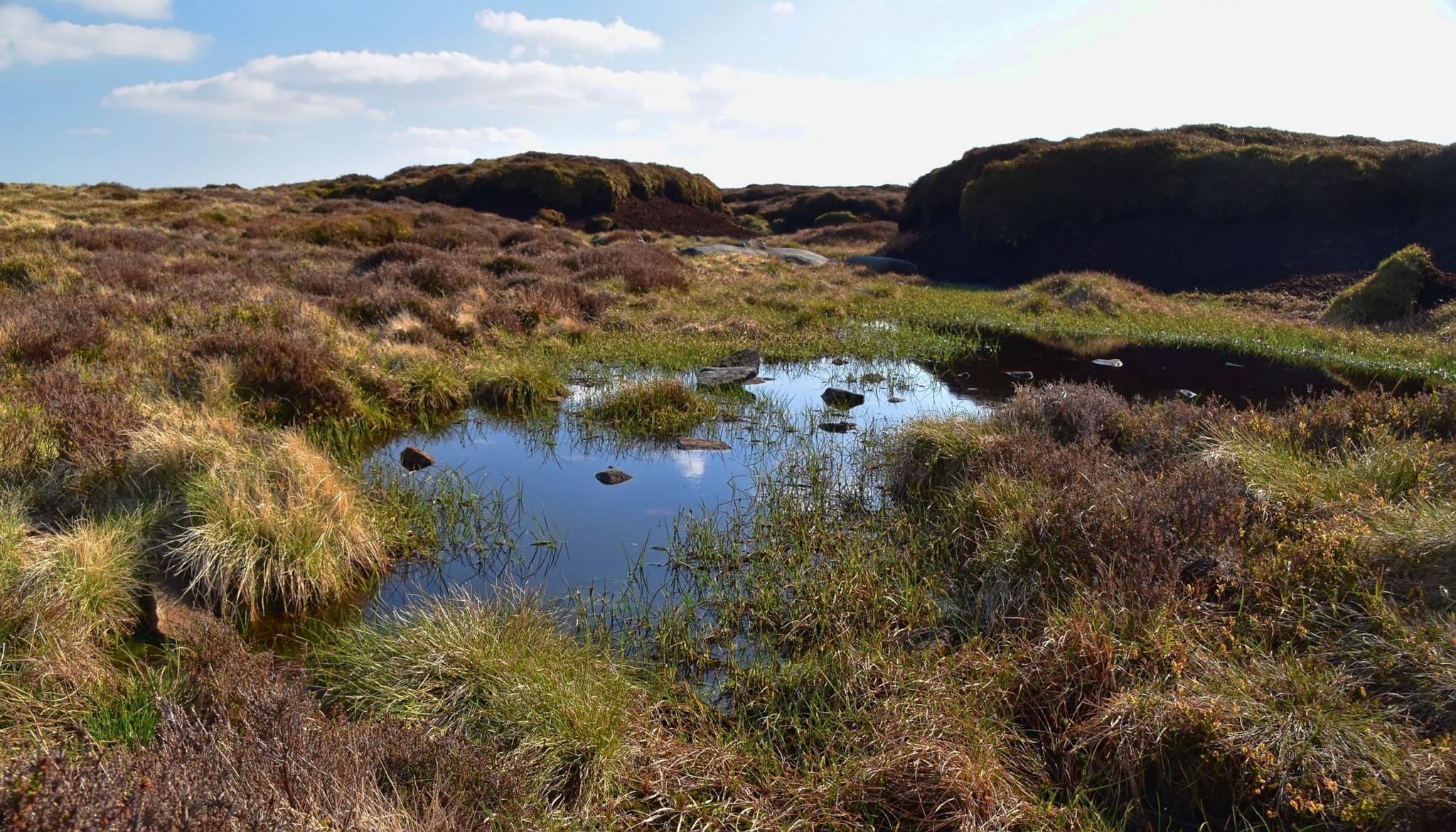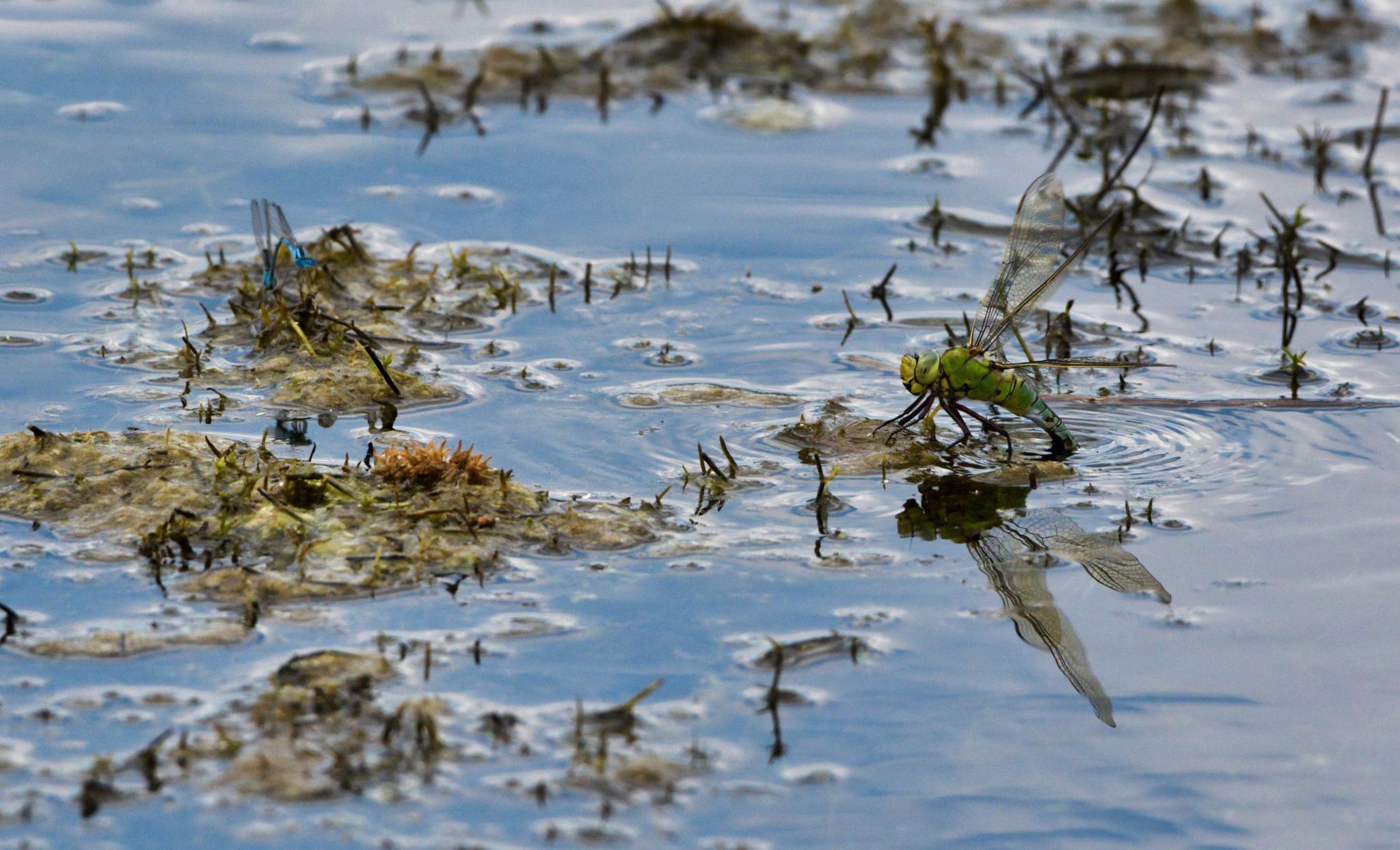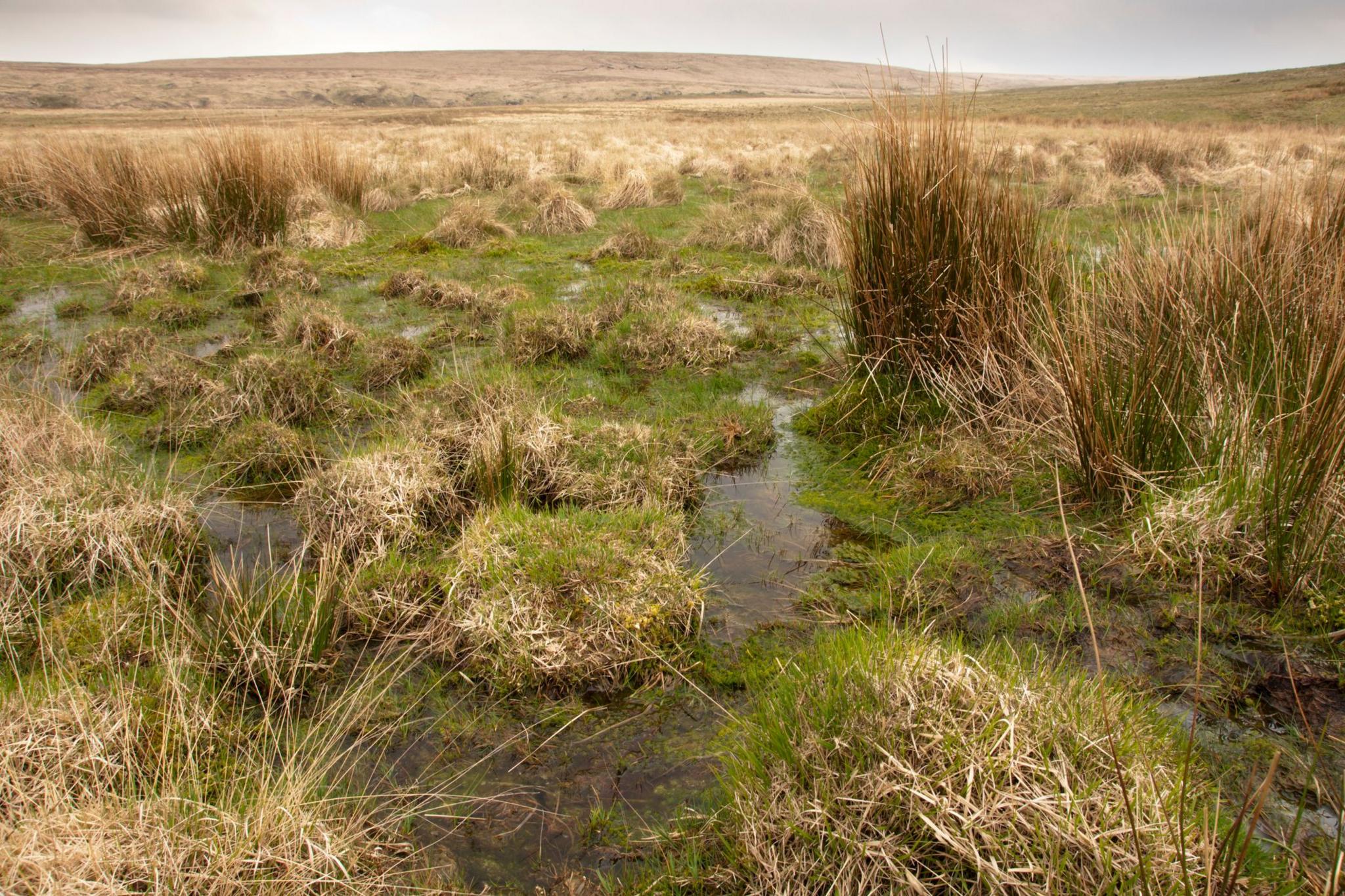National Trust restores nature across area twice the size of Manchester

Some conservation work is taking place in the Peak District
- Published
The National Trust, which works to protect the natural environment across England, Wales and Northern Ireland, has hit an important milestone.
It's restored nature across more than 25,000 hectares of land - an area twice the size of Manchester - in less than a decade.
The charity was aiming to either create or restore habitats which are important for lots of wildlife on this amount of land by 2025, in line with goals it set back in 2015.
The organisation announced on Friday that it had reached the milestone early, after its countryside and ranger teams worked to restore peatlands, meadows, wetlands, woodlands and saltmarsh on land in its care.
More of the latest nature stories
Super rare ghost orchid rediscovered in UK
- Published28 August 2024
Wildlife Photographer of the Year 2024: Organisers release stunning pictures
- Published29 August 2024
Award-winning nature pictures: Whale sharks, birds, coral and wasps
- Published16 August 2024
Ensuring these habitats are healthy, including halting species decline and adapting landscapes, helps to tackle the nature and climate crisis, the National Trust said.
"Our focus on restoring our most important habitats to help our precious wildlife is not only contributing towards national conservation targets but is also a critical response to the challenge of climate change," said Ben McCarthy the charity's head of nature and restoration ecology.
Mr McCarthy said farmers have worked with the charity to restore bushy hedgerows and create space for wildflowers to help wildlife.

Work is being done to restore the habitats of lots of species, including dragonflies
Conservation work on the UK's ancient trees and parklands in places like North Yorkshire, Herefordshire and Cornwall has also helped to sustain habitats for rare species and organisms like oak polypore fungus which is usually found growing at the base of oak trees, and birds like the woodpecker.
"In many ways our work has just begun," Mr McCarthy said.
"Due to the nature of some of these projects we won't see the full benefits for some decades or even centuries, particularly in the case of peatland restoration and tree planting - but what is key is that solid foundations are in place which we can build on to help reverse the decline in our wildlife."

Two of the largest projects that are currently under way are in the Peak District in the Midlands and at Marsden Moor in Yorkshire.
The first project has seen a team blocking gullies, which are valleys or channels created by fast flowing water in peatlands. This leads to land erosion which can have a negative impact on the habitats of surrounding wildlife.
The team has also planted around a million types of moss, creating homes for wildlife like dragonflies, golden plover, frogs and lizards.
The restoration work is not only protecting the area's precious peat but also reducing flood risk and making sure the landscape remains strong in our changing climate, the National Trust said.
On Marsden Moor, various schemes are addressing damage caused by pollution, drainage, which is when water is removed from peatlands, and overgrazing.
"Ensuring we have a wide range of complex habitats is key to tackling the climate and nature crises" said Harry Bowell, who is the land and nature director at the National Trust.
More of the latest
- Published30 August 2024

- Published29 August 2024

- Published29 August 2024

